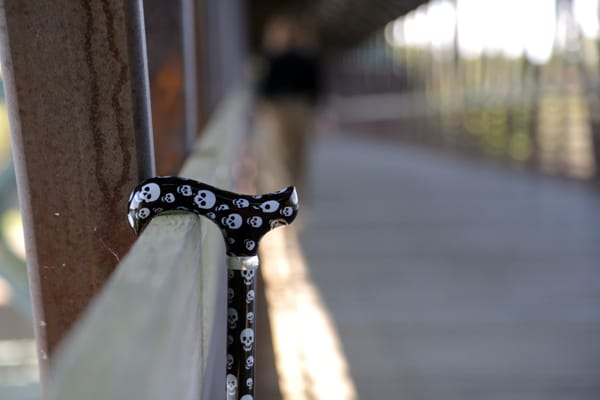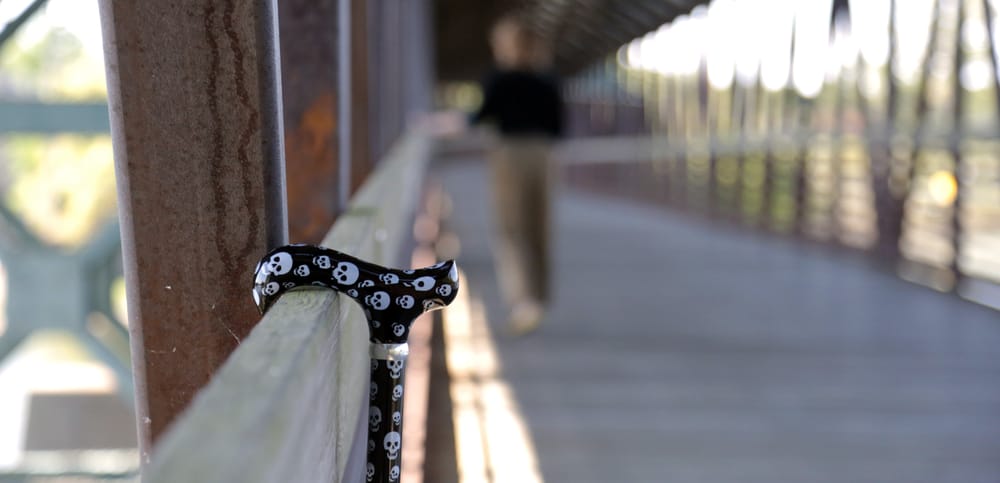Buckle up, friends, this is a bit of a long one.
I started my first-ever full-time job on September 5 and as you know, it's been a very chaotic three months!
Quick recap: I've spent the last few months trying to settle in an expensive city and adjust to full-time work with some intense depression.
But now that I'm finally standing on solid ground, I thought I'd review my first few months as a full-timer.
Let's start with a caveat: I do still freelance on the side. So we're not just talking about adjusting to having one job but fitting two into a more structured schedule.
My experiences with work in the last few months have really boiled down to three major changes:
- Setting boundaries between work and personal life
- Setting boundaries between full-time and freelance work
- Adjusting my priorities
First, I had to rethink my relationship between work and personal life.
Becoming a full-timer is easily one of the scariest things I've ever done. As a lifer freelancer and serial part-timer with disabilities, it was a difficult decision to step out of that comfort zone.
And, honestly, the first two months were pretty rough. Not only was there just a lot of chaos in my life, but I also had to find a new routine that worked for my health, work schedule, and wherever I was living at the time.
I knew from tracking my mental health and productivity a few years ago that my energy ebbs and flows throughout the day. Living with chronic depression also means that I need a healthy routine to proactively prevent and manage potentially life-threatening episodes.
With those two things in mind, I talked to everyone I could at my new job to learn how they worked and how I could too while maintaining some flexibility. It took time, but I eventually learned to set boundaries and maintain a routine by:
- Setting focus times on my calendar
- Being transparent with my managers when I was having a bad day or needed to step away
- Blocking out times for meals and breaks
- Requesting work accommodation
To my surprise, all those years of freelancing came in handy, especially my experience with time and project management. Adjusting to new software tools and learning to organize my day, for example, happened fairly quickly —an enormous help.
Second, I shifted my boundaries between my full-time job and freelancing.
I knew juggling full-time and freelance work would be a challenge. What I didn't expect was how much my approach to freelancing would have to change.
When I started the new job, I'd given myself a month's grace to settle in before taking on new assignments. All my energy went to full-time work and managing health issues.
Once I did start taking on assignments again (probably sooner than I should have), I set certain limits for myself:
- No more than 2 active projects a month. It was okay to have 1-2 more on the back burner as long as they had flexible deadlines.
- No short turnarounds. Any current and new clients would be told the same thing: 7-10 business days minimum for anything more than a short blog post.
- No dollar sign eyes. I had a base income goal with the amount I needed to make to contribute to living expenses and a reach goal for extra savings and personal money. Once I hit that reach goal, I was done for the month. No exceptions.
- No more than one unpaid project at a time. This included anything I was working on with partners (like my podcast and an upcoming whitepaper) and my newsletter/blog.
These were all great boundaries to set, they just didn't always go over well. Typically, best practice for freelancers is not to let them know that you have other work. But because my time and energy were so limited, and most of my clients were established repeats, I decided to be frank.
Probably the worst outcome was when I was tapped to write a workplace mental report for a very large mental health platform.
Perfect topic, perfect client. However, knowing my limitations, I made my needs clear and asked to clarify the timeline with my boundaries in mind before signing any contracts. At first, everything seemed great and the client agreed. But a few days later, I was told the timeline wouldn't work and I was off the project.
A mental health platform taking a writer off a workplace mental health project because they needed more time for health and work reasons? Easily the most ironic thing to happen to me all year.
Other than that, maintaining those boundaries was really a matter of reminding everyone I work with again (and again). Sometimes, clients work with a lot of freelancers and details can slip through the cracks.
Finally, I had to adjust my work priorities moving forward.
At the time, everything was a huge muddle. I just wanted to stay alive and not get fired. Three months in, though, I've now got a clearer picture of how I need to prioritize my time and energy:
Leanna's Priorities
- Health: I could say "well-being" instead, but specifically, my mental and physical health and how I manage my conditions.
- Full-time job: My main source of income, which takes up the majority of my day/week.
- Freelancing: My side income and the basis for potential future career moves, passive income, etc. This includes my current and future businesses, podcast, newsletter, and any side projects I have on hand.
Basically, my priorities range from the least flexible to the most flexible.
My health requires a lot of routine. And if I don't take care of it, I can't work full-time or freelance. So for the sake of self-preservation, this must always come first.
My full-time remote job requires a time and energy commitment to projects, meetings, and group chats, so that's the next priority. And freelancing, which potentially covers a lot of things, is the most flexible. Everything fluctuates, but the boundaries I put in place help limit the resources I use there.
The hardest part of learning to prioritize this year was what I had to let go of. For a good 6-8 weeks, I stopped working on Bettermental with my co-host, writing newsletters, and focusing on side projects.
Wrapping it up
Overall, these past three months have been an insane learning experience from every possible angle. I've learned a whole new way of working, how to juggle multiple kinds of work, and how to prioritize my health throughout.
And that's just the first step. Now that I've found my feet a bit, I look forward to making the most of this new lifestyle next year.
So, what's next for me? I have a whole post planned for this, so won't go into too much detail. Just know that I still have a lot of things to sort out and some exciting ideas for 2024.
'Till next time!
More about Leanna
- Recently written: Upcoming whitepaper on digital nomad visas!
- To get notified when new posts come out, feel free to subscribe here. You can also sign up on my website!
- Learn more about me and my work
- Listen to the Bettermental Podcast






